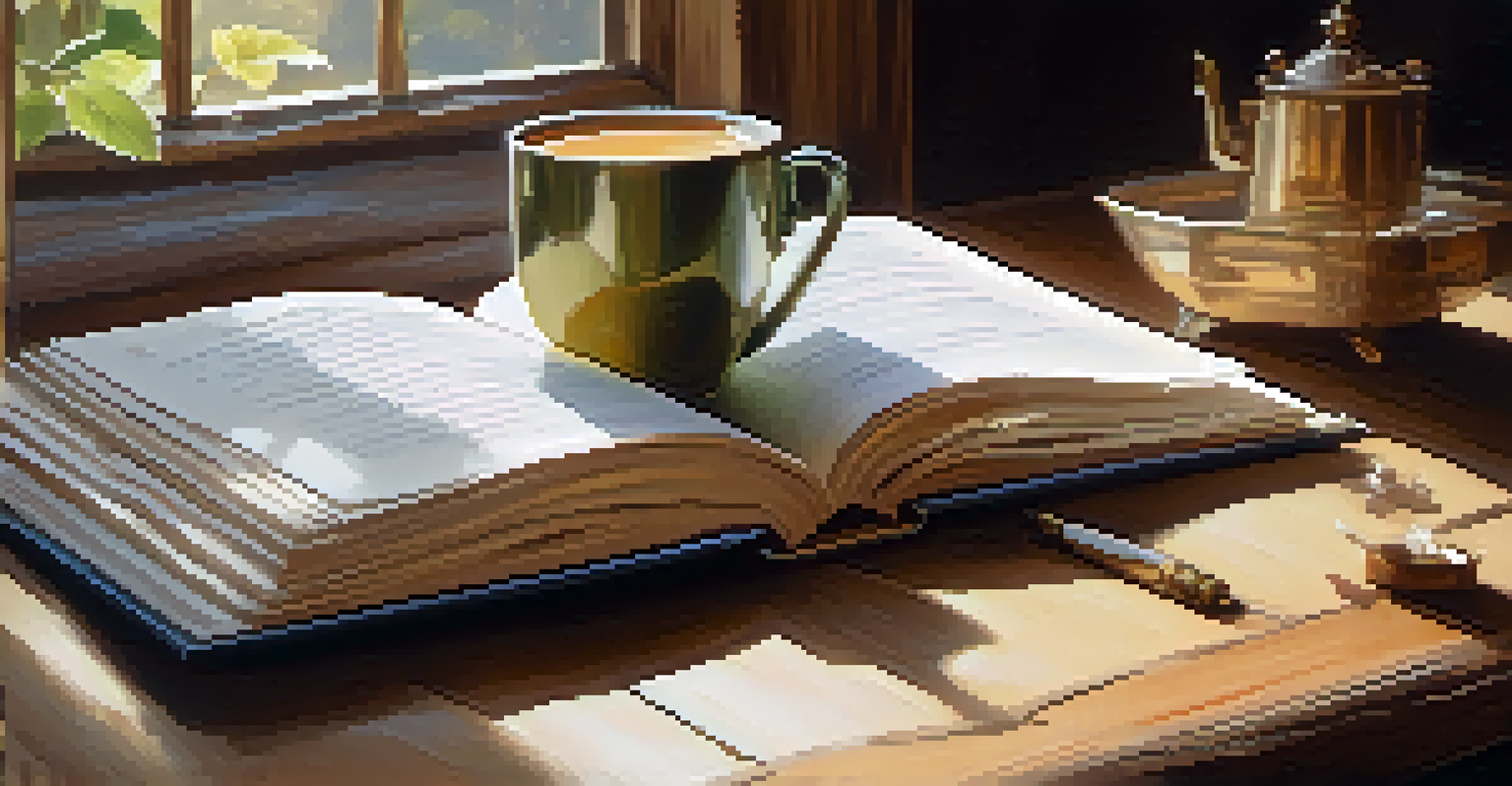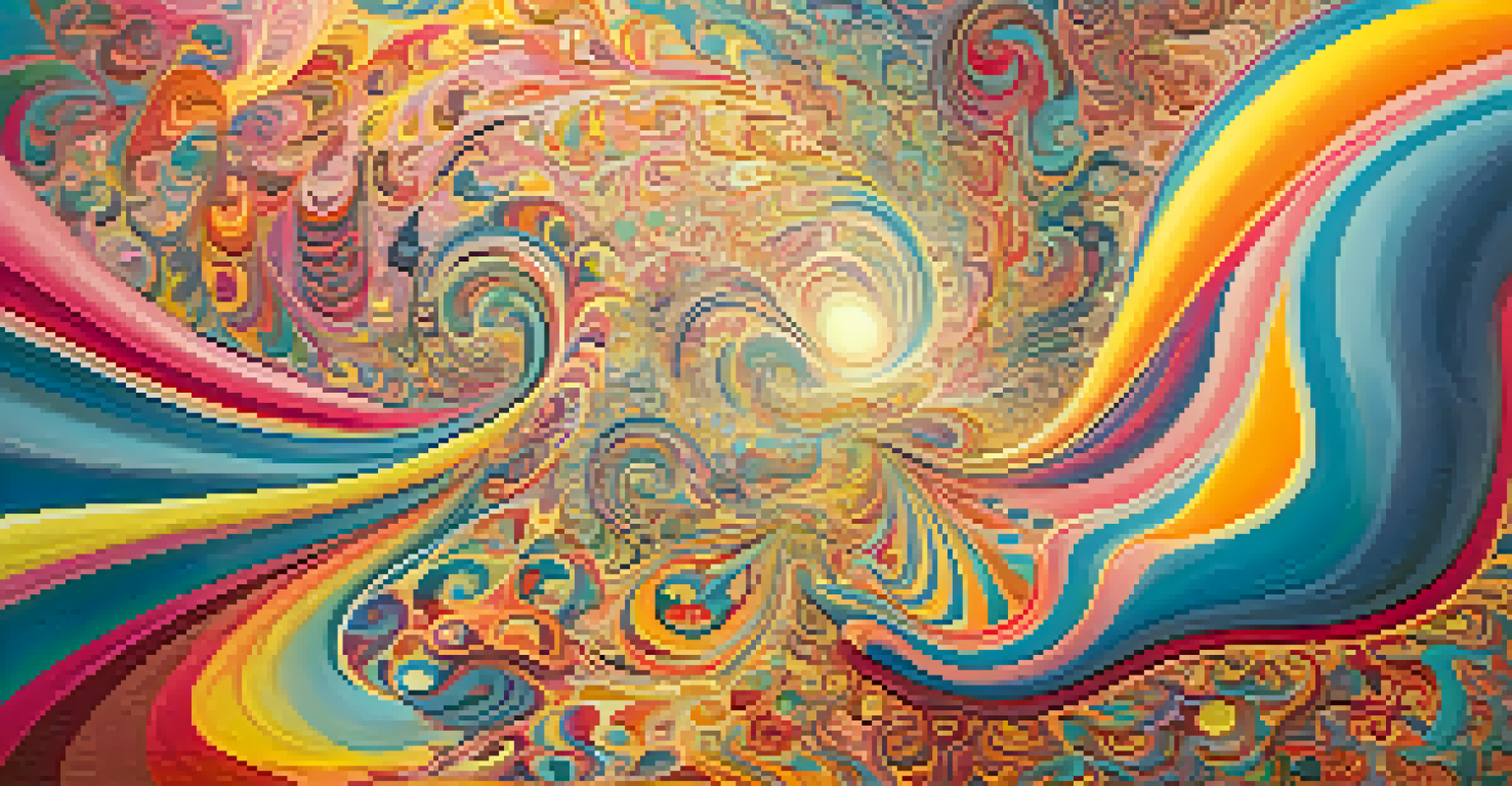Beats and Hallucinogens: The Creative Minds of Allen Ginsberg

The Beat Generation: A Movement of Rebellion and Exploration
The Beat Generation emerged in the 1950s as a cultural and literary movement characterized by its rejection of conventional norms. Writers like Allen Ginsberg, Jack Kerouac, and William S. Burroughs sought to challenge societal expectations through their work. They embraced spontaneity and explored themes of sexuality, spirituality, and personal freedom, often through unconventional means.
The best teacher is experience and not through someone's distorted point of view.
In this context, Ginsberg became a prominent figure, using his poetry as a tool for social critique and self-expression. His most famous work, 'Howl,' exemplifies the raw emotion and candidness that defined the Beat ethos. The movement was not just about literature; it was a holistic exploration of life, consciousness, and identity.
As the Beats pushed boundaries, they also turned to hallucinogens as a way to expand their minds and creative potential. This intersection of art and altered states of consciousness would play a significant role in Ginsberg's development as a poet.
The Influence of Hallucinogens on Ginsberg's Work
Hallucinogens, such as LSD and peyote, became a key part of Ginsberg's life and creative process. He believed that these substances could unlock deeper insights and enhance one's perception of reality. This belief was rooted in the idea that altered states could lead to profound artistic revelations, sparking new ideas and perspectives.

In Ginsberg's poetry, the effects of hallucinogens are evident through his vivid imagery and stream-of-consciousness style. For instance, the surreal landscapes and emotional intensity in 'Howl' can be seen as reflections of his exploration with these substances. The use of hallucinogens allowed him to break free from traditional poetic structures, paving the way for a more liberated form of expression.
Ginsberg's Rebel Spirit in Poetry
Allen Ginsberg and the Beat Generation challenged societal norms through their candid exploration of sexuality, spirituality, and personal freedom.
However, Ginsberg was also aware of the potential dangers associated with drug use. He often approached the topic with caution, emphasizing the importance of intention and mindfulness in the creative process. This nuanced perspective added depth to his work and the Beat movement as a whole.
Ginsberg's Spiritual Quest and Psychedelic Experiences
Ginsberg's exploration of hallucinogens was deeply intertwined with his spiritual journey. He sought to connect with higher states of consciousness and understand the nature of existence. This quest often led him to combine his interest in Eastern spirituality with psychedelic experiences, creating a unique fusion of ideas.
I’m not a poet. I’m a poet’s poet.
In many of his poems, Ginsberg reflects on concepts from Buddhism, Hinduism, and other spiritual traditions, often using hallucinogenic experiences as a catalyst for these insights. His poem 'Kaddish' is infused with a sense of longing and transcendence, revealing how his psychedelic journeys influenced his understanding of life and death.
Through this synthesis of spirituality and psychedelia, Ginsberg not only expanded his own mind but also encouraged readers to explore their own consciousness. His work serves as an invitation to seek deeper truths, whether through meditation, literature, or personal reflection.
Cultural Impact: Ginsberg and the Psychedelic Revolution
Ginsberg's embrace of hallucinogens coincided with the broader cultural shifts of the 1960s, particularly the psychedelic revolution. As more people experimented with drugs, Ginsberg emerged as a vocal advocate for their potential to foster creativity and enlightenment. He became a key figure in the counterculture movement, influencing countless artists and thinkers.
His public persona was not just that of a poet but also a cultural icon who challenged societal norms. Ginsberg's willingness to discuss his drug experiences openly helped demystify psychedelics and encouraged others to explore their own creative capacities. This cultural phenomenon was marked by music festivals, art, and literature that celebrated altered states of consciousness.
Hallucinogens and Creative Insights
Ginsberg utilized hallucinogens to unlock deeper artistic insights, resulting in vivid imagery and a liberated poetic style.
Ginsberg's impact extended beyond literature; he became a symbol of the fight for personal freedom and self-exploration. His work inspired a generation to question authority and seek liberation through various means, including hallucinogens, which became a hallmark of the era.
The Dark Side: Risks of Hallucinogen Use in Creativity
While Ginsberg celebrated the benefits of hallucinogens, he also acknowledged the risks involved. The creative high that many artists experience can sometimes lead to darker paths, including addiction and mental health issues. Ginsberg himself struggled with the consequences of drug use, often reflecting on the fine line between inspiration and self-destruction.
In his later works, Ginsberg became more introspective about his experiences, highlighting the need for balance in the pursuit of creativity. He understood that while psychedelics could elevate consciousness, they could also distort perceptions and lead to chaos if not approached responsibly. This duality is a recurring theme in his poetry.
By addressing these complexities, Ginsberg's work serves as both a celebration and a cautionary tale about the use of hallucinogens in the creative process. His honesty encourages readers to consider the broader implications of their choices, both in art and life.
Legacy: Ginsberg's Enduring Influence on Literature and Beyond
Allen Ginsberg's influence on literature and culture is undeniable, with his exploration of hallucinogens leaving a lasting mark. His willingness to experiment with form, style, and subject matter opened doors for future generations of writers and artists. Many contemporary poets draw inspiration from his fearless approach to creativity and his blending of various influences.
Moreover, Ginsberg's work continues to resonate in today's discussions around mental health, drug use, and spirituality. His candidness about his struggles and triumphs encourages a more open dialogue about the complexities of the human experience. In an age where these topics remain relevant, Ginsberg's voice is more important than ever.
Legacy of Exploration and Honesty
Ginsberg's enduring influence on literature encourages open dialogue about mental health, drug use, and the complexities of the human experience.
Ultimately, Ginsberg's legacy is one of exploration, honesty, and a deep connection to the human spirit. His contributions to the Beat Generation and the psychedelic movement serve as a reminder of the transformative power of art and the quest for understanding, making him a timeless figure in American literature.
Conclusion: The Intersection of Creativity and Consciousness
In examining the relationship between hallucinogens and Ginsberg's creative output, we find a rich tapestry of exploration and expression. His work embodies the spirit of a generation that sought to break free from conventional constraints, using every tool at their disposal, including psychedelics. This intersection of creativity and consciousness continues to inspire artists today.
Ginsberg's journey reminds us that the quest for understanding oneself and the world is often complex and multifaceted. Whether through poetry, music, or personal reflection, the pursuit of creativity can lead to profound insights and transformative experiences. As we navigate our own paths, we can look to Ginsberg as a guide in embracing both the light and the shadows of our creative journeys.

Ultimately, Ginsberg's legacy serves as an invitation to explore the depths of our consciousness and express our truths, celebrating the vibrant interplay between the mind, art, and the human experience. His life and work encourage a continual quest for meaning, reminding us that creativity is a powerful force in shaping our understanding of the world.